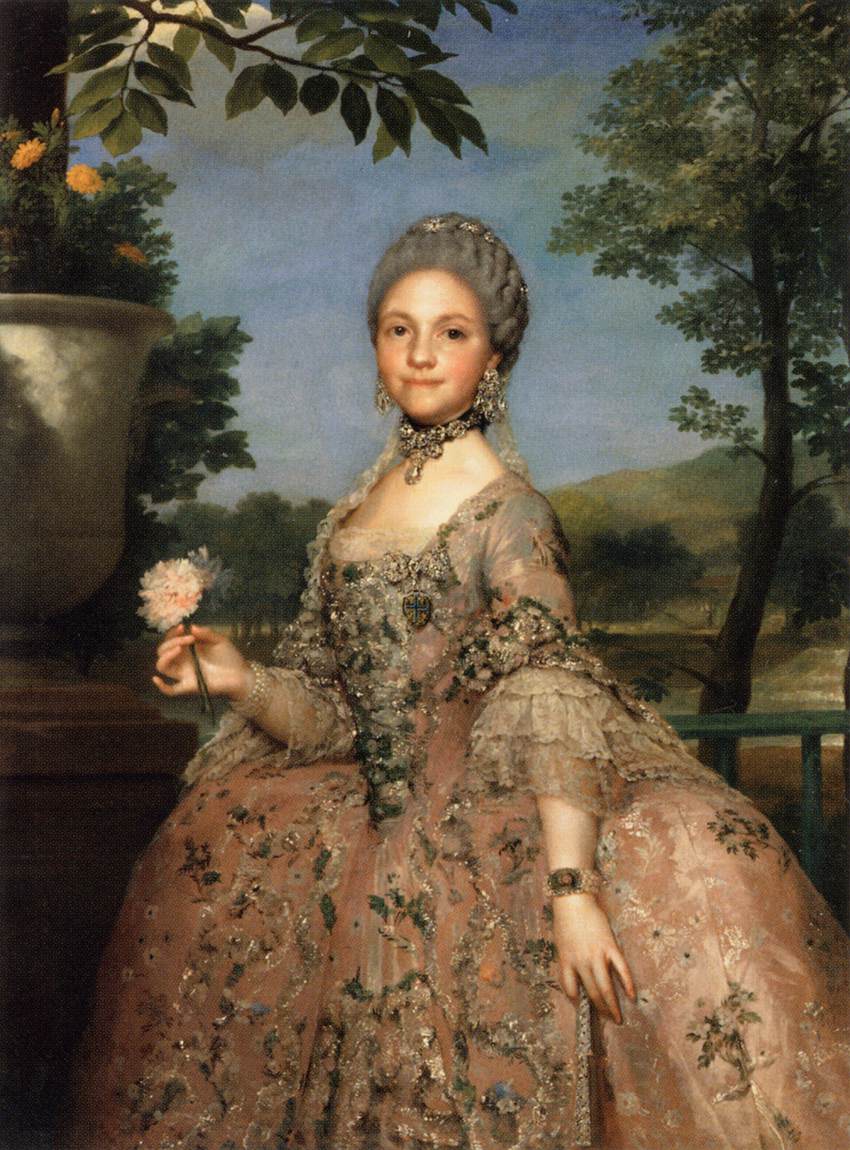Description
The painting "Maria Luisa of Parma" by the artist Anton Raphael Mengs is an 18th century masterpiece noted for its elegance and sophistication. The work represents the wife of King Carlos III of Spain, María Luisa de Parma, who poses with a serene and majestic attitude.
The artistic style of the work is a mixture of baroque and neoclassical elements. Mengs, who was one of the main representatives of neoclassicism in Europe, used a very detailed and precise technique to create the image of the queen. The details of the dress and jewelry are particularly impressive, reflecting the fashion of the time.
The composition of the work is very balanced and harmonious. Mengs chose a classic pose for the queen, with one hand resting on a table and the other holding a rose. The rose, which symbolizes beauty and fragility, contrasts with the strength and determination that emanates from the figure of the queen.
Color is also an important element of the work. Mengs used a soft and delicate palette, with pastel shades that reflect the queen's elegance and sophistication. The dark background, which highlights the figure of the queen, creates a dramatic and theatrical effect.
The history of the painting is interesting because it was commissioned by King Carlos III of Spain as a gift to his wife. The work was painted in Rome in 1765, when Mengs was court painter to the king. The painting was highly prized by the queen, who kept it in her personal collection until her death.
Little-known aspects of the work include the fact that Mengs used his own wife as the model for the figure of the queen. It is also known that the rose held by the queen was later added to the work, possibly as a symbol of love and affection.
In summary, the painting "Maria Luisa of Parma" by Anton Raphael Mengs is an impressive work that stands out for its artistic style, composition, color and the story behind its creation. It is a work that continues to captivate viewers to this day, and is a display of the talent and skill of one of the great masters of Neoclassicism.


